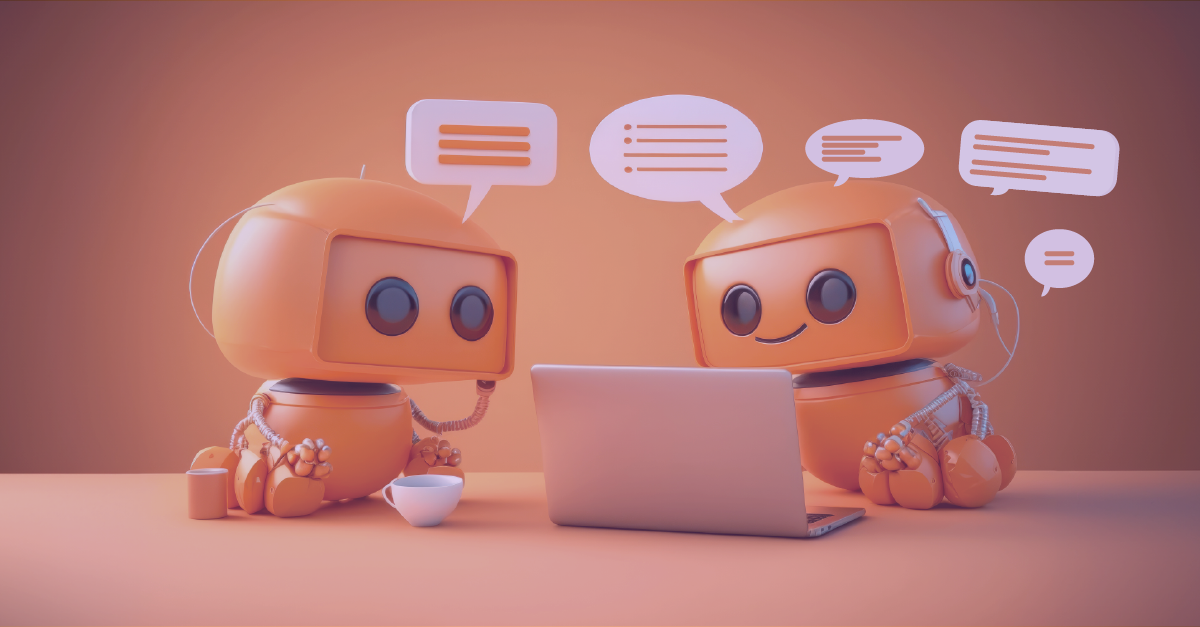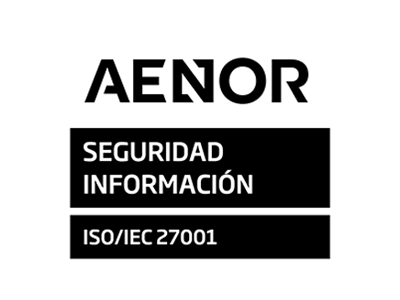AI Chatbot vs Virtual Agent: Decoding The Differences
7th March 2025

Are you entrusting your business’s future to an AI chatbot or a virtual agent?
Understanding the critical differences between the two could be the key to unlocking unparalleled efficiency and customer satisfaction. In this post we’ll guide you through the differences so that you can make informed, strategic decisions for your business.
Navigating the world of automation solutions like AI chatbots and AI virtual agents can feel overwhelming. But, if you’re a business leader or a customer service professional it’s important to know how to distinguish between these digital helpers, powered by advancements in artificial intelligence and generative AI, and what they each offer.
Choosing the right automation tool for your business isn’t just about flipping a coin; it’s about evaluating features like omnichannel automation, CRM integrations, and multilingual capabilities. Whether you’re leaning towards the simplicity of a chatbot or the comprehensive assistance provided by a virtual agent, understanding their core differences and applications will illuminate the path to enhancing your customer service strategy.
What is an AI Chatbot?
AI chatbots, often simply referred to as chatbots, are software applications designed to mimic human conversation through text or voice interactions. They primarily operate on a set of predefined rules and are commonly utilized for tasks such as answering frequently asked questions (FAQs) or executing straightforward tasks. Here’s a closer look at their key features and functionalities:
Key Features and Functionalities of AI Chatbots
- Basic Interaction and Task Management: Chatbots are adept at managing basic interactions, such as providing answers to FAQs and handling simple customer requests. This makes them particularly useful in scenarios where quick, straightforward communication is needed.
- Integration Across Platforms: These virtual assistants can be seamlessly integrated into various communication channels including social media platforms, company websites, and mobile apps, enhancing accessibility for users seeking instant assistance.
- Operational Efficiency: By automating responses and handling routine inquiries, chatbots significantly reduce the workload on human employees, allowing them to focus on more complex tasks. This not only boosts operational efficiency but also cuts down on operational costs.
What is a AI Virtual Agent?
AI Virtual Agents, or Intelligent Virtual Assistants, represent a significant leap beyond traditional chatbots. These sophisticated software programs harness the power of artificial intelligence to engage with users in a remarkably human-like manner. Unlike chatbots that rely on pre-defined rules, virtual agents use advanced conversational and generative AI to not only understand but also interpret the nuance of human language. This allows them to adapt seamlessly to the user’s tone of voice and context, providing a more intuitive and personalized interaction experience.
Key Capabilities of AI Virtual Agents
- Advanced Understanding and Interaction: Virtual agents are equipped with Natural Language Processing (NLP), machine learning, and deep learning algorithms. This enables them to comprehend and respond to any input across various languages, continually improving with each interaction.
- Complex Task Management: Far from handling mere inquiries, these agents perform complex transactional actions like scheduling appointments, managing emails, or even handling sales operations. They analyze customer data to advise, sell, and up-sell, making them invaluable across multiple customer touchpoints.
- Adaptive Learning and Personalization: Each interaction with a virtual agent is an opportunity for it to learn and adapt. These agents remember user preferences and adjust their responses accordingly, making each interaction smoother and more personalized than the last.
By integrating AI virtual agents into customer service frameworks, businesses can not only enhance operational efficiency but also significantly improve the customer experience. These agents offer a blend of empathy and efficiency, bridging the gap between digital convenience and human warmth.
Core Functional Differences
Diving into the core functional differences between AI chatbots and virtual agents can feel like comparing a handy toolkit to a Swiss Army knife—both useful but designed for varying complexities in tasks.
Technology and Intelligence
1.Rule-Based vs. Learning Capabilities: AI chatbots operate primarily on rule-based logic, where they follow predefined paths to solve problems. This makes them excellent for straightforward tasks like answering FAQs or booking appointments. On the other hand, virtual agents are powered by machine learning and advanced algorithms, enabling them to learn from past interactions. This not only helps in handling complex queries but also allows them to provide more contextual and meaningful responses.
2. Understanding and Interaction: While chatbots use Natural Language Processing (NLP) to understand basic commands, virtual agents leverage deeper NLP and Natural Language Understanding (NLU) capabilities. This allows virtual agents to grasp the nuances of human language, making interactions feel more natural and engaging.
Functionality and Deployment
- Chatbots: Primarily focused on customer engagement, chatbots are deployed on websites and apps to provide quick responses.
- Virtual Agents: These are integrated into a broader range of platforms including smart devices, enabling them to perform both simple and complex tasks dynamically.
Cost-Effectiveness and Application
- Initial Setup and Maintenance Costs: Deploying AI chatbots is generally less expensive than virtual agents due to their simpler architecture. This cost-effectiveness makes chatbots a go-to option for businesses looking to automate their basic customer service operations without a hefty initial investment.
- Scope of Application: While chatbots excel in environments that require high-volume, repetitive task handling, virtual agents are suited for scenarios where customer interactions are more detailed and personalized.
By understanding these differences, you can better decide which solution aligns with your business needs, ensuring that your investment not only adds value but also enhances your operational efficiency and customer satisfaction.
Application and Use Cases
In the bustling world of customer service and task management, AI chatbots and virtual agents are revolutionizing how businesses operate across various sectors. Let’s take a look at some specific applications and use cases where these technologies shine.
Intelligent Front Door and AI Voice Intelligent Intake
Imagine walking into a virtual store where you’re greeted by an AI that not only welcomes you but understands exactly why you’re there. This is the role of AI in settings like healthcare and retail, where it acts as the first point of contact. These systems handle repeatable interactions, understand natural language, and even respond using human-sounding voices. Whether it’s guiding a patient through the appointment process or assisting a customer in a retail store, these AIs ensure that every interaction is smooth and personalized.
Enhanced Customer Service Across Industries
From handling FAQs in a human-like manner to managing complex customer service scenarios, AI technologies are adept at boosting operational efficiency. In sectors like finance, healthcare, and retail, these tools automate routine inquiries, manage appointments, and even handle sensitive tasks like prescription refills. The result? A seamless, efficient service experience that leaves customers satisfied and staff free to focus on more complex issues.
Data-Driven Insights and Personalization
The power of AI extends into data analysis and personalized service delivery. In real estate, for instance, AI tools manage initial customer interactions, allowing agents to focus on high-interest clients. In retail, these systems offer personalized shopping experiences by recommending products based on customer preferences and past purchases. By analyzing user interactions and feedback, businesses can continually refine their services, ensuring that they meet the evolving needs of their customers.
Through these applications, AI chatbots and virtual agents not only streamline operations but also enhance the customer experience, proving indispensable in our increasingly digital world.
Choosing the Right Solution
When deciding between an AI chatbot and a virtual agent, consider the complexity of tasks and the depth of user interaction required. AI chatbots are your go-to for enhancing customer support with quick responses and straightforward information retrieval. They’re perfect for scheduling appointments or delivering product recommendations efficiently. On the flip side, virtual agents shine in scenarios requiring more nuanced, human-like interactions. They handle tasks that resemble those of a personal assistant, learning user preferences and anticipating needs based on deep learning and machine learning algorithms.
Key Decision Factors
- Functionality Needs: Determine if you need simple query handling or complex problem-solving capabilities.
- User Interaction: Assess whether your customer interactions are transactional or require deeper engagement.
- Industry Requirements: Consider the specific demands of your industry—does it benefit more from quick information processing or detailed, personalized experiences?
Implementation Considerations
- Budget and Resources: Evaluate your financial capacity and technical resources to support your choice.
- Integration Scope: Check the compatibility of the AI system with your existing platforms and workflows.
- Scalability: Ensure that the solution can grow with your business needs without requiring frequent overhauls.
By aligning these factors with your business objectives and the expectations of your users, you can select a solution that not only meets immediate needs but also supports long-term growth and customer satisfaction.
Final Takeaways
Ultimately, the choice between an AI chatbot and a virtual agent hinges not just on technological capabilities but also on the desired depth of customer engagement and the complexity of tasks at hand. As we look towards the future, it’s clear that both AI-powered tools possess the potential to significantly enhance customer experience, streamline operations, and drive business growth. Whether optimizing for efficiency or striving for deep personalization, businesses must consider their unique needs and industry requirements to select the solution that best fits their vision for customer interaction in the digital age.
Find out how our Virtual Agent can catapult your business into the future.
Don’t miss out on our weekly blog posts and LinkedIn updates about the fascinating advancements that will propel your business.
Ready to see what we can do for you?
In the right hands, artificial intelligence can take human performance to a hitherto unimaginable level. Are you ready for evolution?




